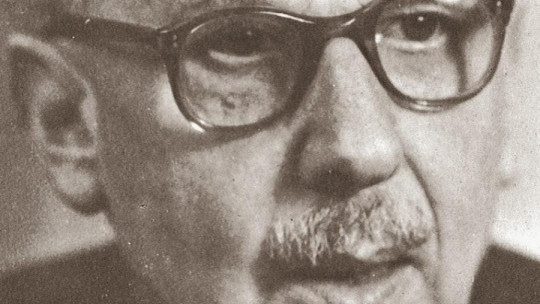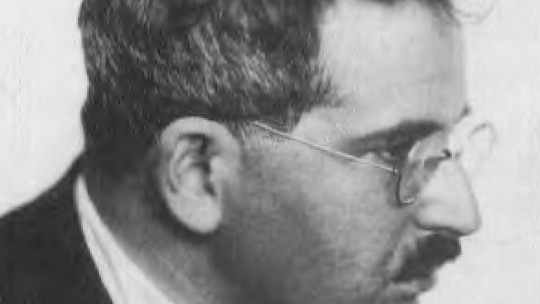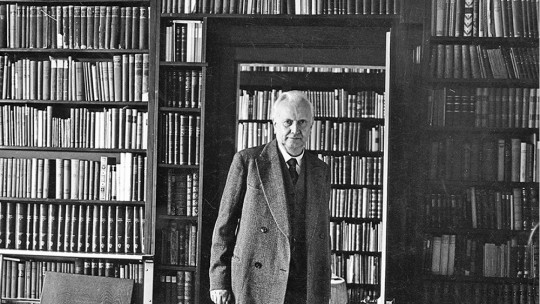Hermeneutics is an art or current dedicated to interpreting texts, especially sacred writings and philosophical and artistic texts. Hans-Georg Gadamer was a German philosopher who renewed this current with his contributions.
Gadamer was a disciple of Heidegger, another German thinker, considered the most influential of the 20th century. In this article we will see a brief biography of Hans-Georg Gadamer and a summary of his contributions, especially in the field of hermeneutics, philosophy and aesthetics.
Hans-Georg Gadamer: biography of this philosopher
Hans-Georg Gadamer was a German philosopher, born in Marburg in 1900 and died in Heidelberg in 2002. He graduated with a doctoral thesis in philosophy in 1922. Later, in 1933, he taught aesthetics and ethics in his hometown, in Kiel and another once in Marburg.
In the latter city, Marburg, Gadamer was appointed extraordinary professor in 1937, and two years later he obtained a professorship at the University of Leipzig. Subsequently, he moved to the universities of Frankfurt and Heidelberg, where he succeeded Karl Jaspers as professor of philosophy. In 1968 he became professor emeritus.
Hans-Georg Gadamer He is known for his essays in three notable fields: the history of philosophy, the philosophy of history and aesthetics (studies the essence and perception of beauty).
Intellectual development
Truth and method. Elements of a philosophical hermeneutics (1960) was his most important work, in which established the budgets and objectives of the hermeneutic current (technique or method of interpreting texts). This current affirms that the world does not exist, but rather various historical meanings of the “world.” However, although this current implies a great relativism, Hans-Georg Gadamer alludes in his work to a possible communication and expression of a meaning.
In this work, the hermeneutic philosophy and the most relevant work of the author are systematically presented. The influence of Heidegger’s hermeneutics of being and Wilhelm Dilthey’s philosophy is shown.
The history of truth that Hans-Georg Gadamer reconstructs in his work It is marked by the famous philosopher Descartes , from the concept of “adaequatio”; This means that truth is actually a method of achieving the proper correspondence between facts and propositions. Gadamer, however, opposes this position and describes the real possibilities of the human experience of truth.
Hermeneutical principles
Hans-Georg Gadamer elaborates a series of hermeneutical principles that go beyond philosophy, and that They can be applied to different disciplines such as literary criticism or sociology According to the author, the search for truth requires redefining hermeneutics; According to him, this current goes beyond the interpretation of texts and encompasses an essential reflection to understand the world.
Hans-Georg Gadamer founded the Hermeneutic School and affirms that the interpretation of a text must avoid the arbitrariness and limitations that arise from mental habits, and that we must focus our gaze on the things themselves, on the texts themselves. According to Gadamer, whenever we approach a text, we do so from a project and with some prior idea of what is done there.
aesthetic experience
Hans-Georg Gadamer also spoke of aesthetic experience, according to which from this “one can glimpse a circumstance of truth in which the very person of the experience is modified.”
Thus, Gadamer understands, unlike other philosophical theories where truth is identified with the knowledge of the positive sciences, that the truth of experiences emerges from people in contact with works of art, history or personal dialogue According to this philosopher, in the aesthetic experience there is a dissolution of the perceiving subject and the object (the work of art). This experience breaks the subject-object dichotomy.
On the other hand, the author affirms that the aesthetic experience is carried out through a back-and-forth movement in which the work and the subject who enjoys it move in the same direction. For example, when contemplating a work of art, the viewer is subjected to the vicissitudes of the plot, and thereby enters the work itself, at the same time that the work “operates” on himself. This is defined by Hans-Georg Gadamer as play.
Other works and relationship with other authors
Hans-Georg Gadamer also wrote other works, such as The problem of historical consciousness (1963), Small writings (1967) and Dialogue and dialectic (1980), a compendium of essays on Plato’s dialogues.
On the other hand, throughout his life and professional career, He polemicized with thinkers such as Jacques Derrida and Jürgen Habermas Riccardo Dottori, Italian philosopher, published his conversations with Gadamer in a work titled The last one gave. Lezioni sul XX Secolo; The edition of this work was published in German in 2002, weeks before Hans-Georg Gadamer’s forte.
Hahn, L. and Drechsler, W. (1998). The philosophy of Hans-Georg Gadamer. Trames, 2(4), 338-351. Malpas, J. (2003). Hans-Georg Gadamer. Stanford Encyclopedia of Philosophy.









